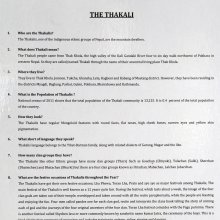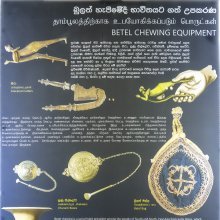Thar: 2 definitions
Introduction:
Thar means something in biology. If you want to know the exact meaning, history, etymology or English translation of this term then check out the descriptions on this page. Add your comment or reference to a book if you want to contribute to this summary article.
Images (photo gallery)
Biology (plants and animals)
Source: Google Books: CRC World Dictionary (Regional names)Thar in India is the name of a plant defined with Euphorbia neriifolia in various botanical sources. This page contains potential references in Ayurveda, modern medicine, and other folk traditions or local practices It has the synonym Tithymalus edulis (Lour.) H. Karst. (among others).
Example references for further research on medicinal uses or toxicity (see latin names for full list):
· Plantae Novae Hispaniae. (1893)
· Rev. Int. Bot. Appl. Agric. Trop. (1948)
· Verhandelingen van het Bataviaasch Genootschap van Kunsten en Wetenschapen (1790)
· Species Plantarum (1753)
· Flora de Filipinas (1837)
· FBI (1887)
If you are looking for specific details regarding Thar, for example diet and recipes, chemical composition, health benefits, pregnancy safety, extract dosage, side effects, have a look at these references.

This sections includes definitions from the five kingdoms of living things: Animals, Plants, Fungi, Protists and Monera. It will include both the official binomial nomenclature (scientific names usually in Latin) as well as regional spellings and variants.
Languages of India and abroad
Nepali dictionary
Source: unoes: Nepali-English DictionaryThar is another spelling for थर [thara].—n. clan; tribe; sub-caste;
Nepali is the primary language of the Nepalese people counting almost 20 million native speakers. The country of Nepal is situated in the Himalaya mountain range to the north of India.
See also (Relevant definitions)
Starts with (+495): Tar, Tar-ceyalay, Tar-cirappupayiram, Tar-invalnan, Tar-kattarkatutaci, Tar-poruttuporul, Tar-taray, Tara, Tara-tamavipakam, Taracaram, Taracu, Taracukkol, Taracukkuntu, Taracumul, Taracuttattu, Tarai, Tarai-illakuruvi, Tarai-talvattil, Taraiccampanki, Taraiccenai.
Ends with (+329): Acitar, Aimmalattar, Aka-peycittar, Akatar, Akatikshettirattar, Akkiniccuvattar, Akkutar, Akutar, Alavantar, Allimatar, Alunkanattar, Amaltar, Amiltar, Amirtakanattar, Ammanattar, Ampalattar, Amutar, Anantar, Anatinatar, Ancuvanattar.
Full-text (+84): Abhitthavati, Ottharati, Ajjhottharati, Avattharati, Dieng thar lang sob, Abhittharati, Attharati, Dieng thar lang jou, Nittharati, Santharati, Pattharati, Vitthareti, Vempinraron, Kilenney, Icanrar, Tarkkulal, Varcutar, Tarkalikam, Macamacenal, Tar-taray.
Relevant text
Search found 15 books and stories containing Thar; (plurals include: Thars). You can also click to the full overview containing English textual excerpts. Below are direct links for the most relevant articles:
Guhyagarbha Tantra (with Commentary) (by Gyurme Dorje)
Commentary 1-2: Teachings on the Wrathful Deities < [Chapter 15 (Text and Commentary)]
Text 11.13 (Commentary) < [Chapter 11 (Text and Commentary)]
Text 6.12 (Commentary) < [Chapter 6 (text and commentary)]
Bodhisattvacharyavatara (by Andreas Kretschmar)
Text Sections 130-131 < [Khenpo Chöga’s Oral Explanations]
Text Section 208 < [Khenpo Chöga’s Oral Explanations]
Blue Annals (deb-ther sngon-po) (by George N. Roerich)
Chapter 25 - Rgwa lo < [Book 10 - The Kālacakra]
Chapter 1a - Eary Translation Period Tantric Texts and Lineages < [Book 3 - Early translations of Secret Mantra]
Chapter 4 - The first Kālacakra lineage < [Book 10 - The Kālacakra]
The Great Chariot (by Longchenpa)
1a) The benefit of leading from samsara to peace < [Part 1 - The explanation of the benefits]
1a) For individual beings who take refuge < [Part 1 - The causal refuge]
Part 2 - Meditation on kindness < [G. How to meditate]
Saraswathy River < [January – March, 2005]
Drama In The Desert < [January 1958]
Mrs. Stowe’s ‘Uncle Tom’s Cabin’ < [October – December, 1997]
Tibet (Myth, Religion and History) (by Tsewang Gyalpo Arya)
5. Zhangzhung Script < [Chapter 2 - Zhangzhung Civilization]
10. Conclusion < [Chapter 5 - Tibetan Language and Writing System]
9. Zhangzhung sMar yig as the Source < [Chapter 5 - Tibetan Language and Writing System]

